Building the path for pro-players in LATAM
Designing a mobile platform to help gamers become pro-players.
Background & overview
Esports State is an esports mexican startup that connects gamers and brands, by creating influencer
marketing and pro-player interactions, gaming-focused marketing campaigns, and tournaments and events.
I joined Esports State in the second semester of 2021 as a solo UX/UI designer for the company and
helped them with:
- Planning a business and design strategy by working close to stakeholders, investors and users.
- Executing UX research to collect qualitative and quantitative data to define user personas and their needs.
- Conducting ideation sessions within the team to define a variety of solutions, which were later prioritized based on a value and usage matrix.
My role
UX/UI Designer
User and competition research, prototyping.
The process
The process at Esports State was based on the Double Diamond process, where we aimed to incorporate the key phases of discovery, definition, ideation and implementation.
Collecting business requirements
The goal Esports State is aiming for is to promote eSports in Latin America. They seek to consolidate
a community of gamers in which there are spaces and tools that allow the development of talent
and professionalization of the passion for Esports; in other words, they want to help gamers
become pro-players.
In addition, they also seek to connect brands with players and create marketing
strategies for various products. To achieve this, it is necessary to develop a platform where
gamers can develop their talent, take part in events and connect with brands.
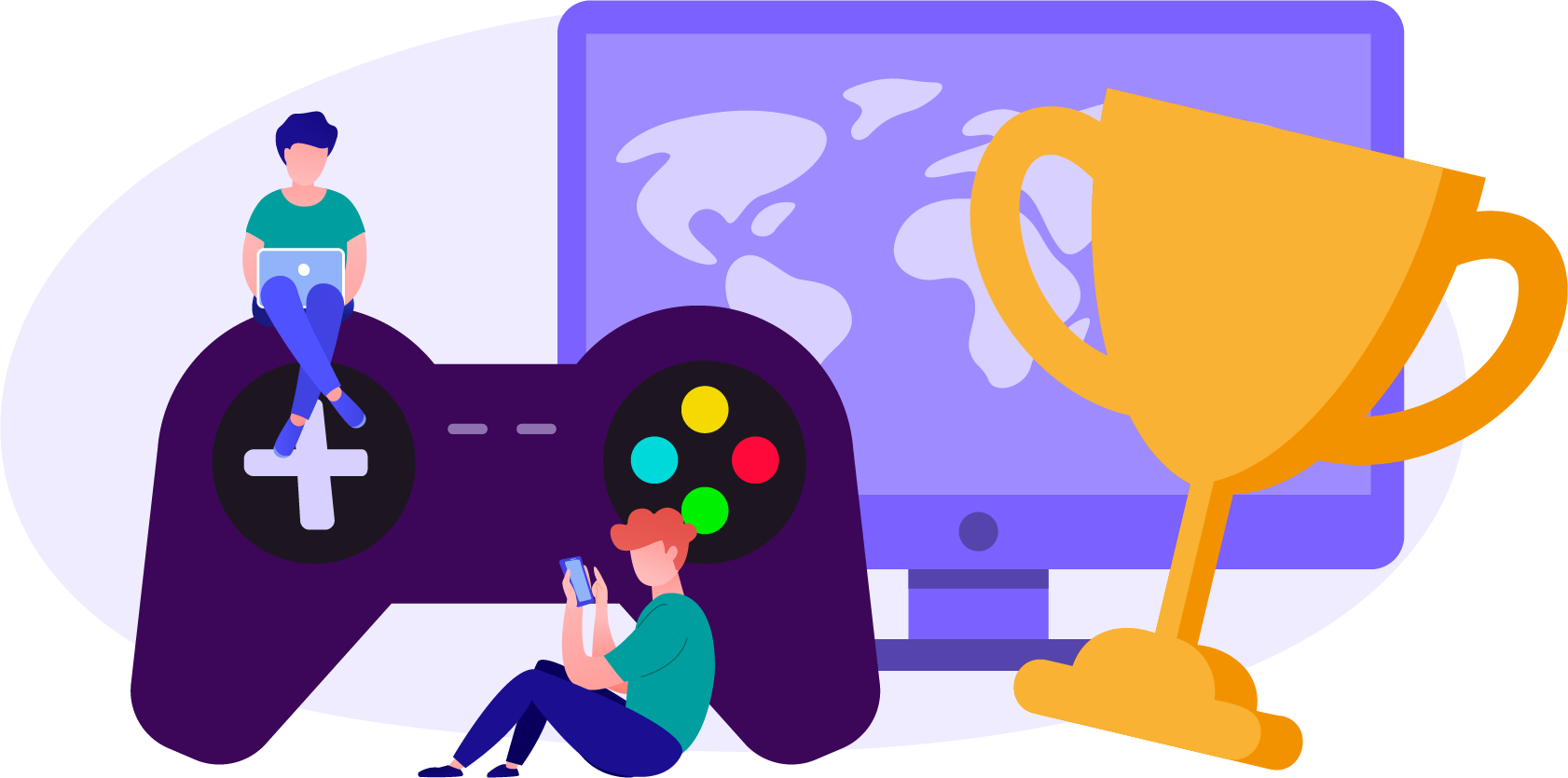
Defining our users and understanding their needs
Based on the business requirements, we needed to segment our population. We took by reference the “Gaming personas” article by Global Web Index, which categorizes the gaming community into 6 different users:
- Mobile-only
- Casual gamer
- Esporter or pro-player
- Socializer
- Cloud-gamer
- Influencer
Based on the collected insights from brief 30-minute calls with 2 persons from each category, we decided that our target users were going to be casual gamers and esporters or pro-players.
After further conducting user research, both qualitatively and quantitatively via interviews and surveys, it was revealed that:
Casual Gamers
- Wouldn't participate in events or tournaments of their favorite games, as they don’t know where to find them
- Don't have enough time to practice or play
- Can't find too many opportunities to professionaly get into the world of videogames, and more specifically, esports
What motivates them:
- They want to show they are better gamers than others (competitivity)
- Not spending too much money on tournament inscriptions
- Winning prices, but not necessarily cash
Esporters or Pro-Players
- Don't have all the tournaments in a single platform
- Having to like or follow several pages to be able to enroll in tournaments
- Having too many Discord servers, for communication on the tournaments, overwhelms them
What motivates them:
- Winning prizes in each tournament (mostly cash)
- Competing against the best players nation-wide or internationally
- Having fun
- Forming a gaming community
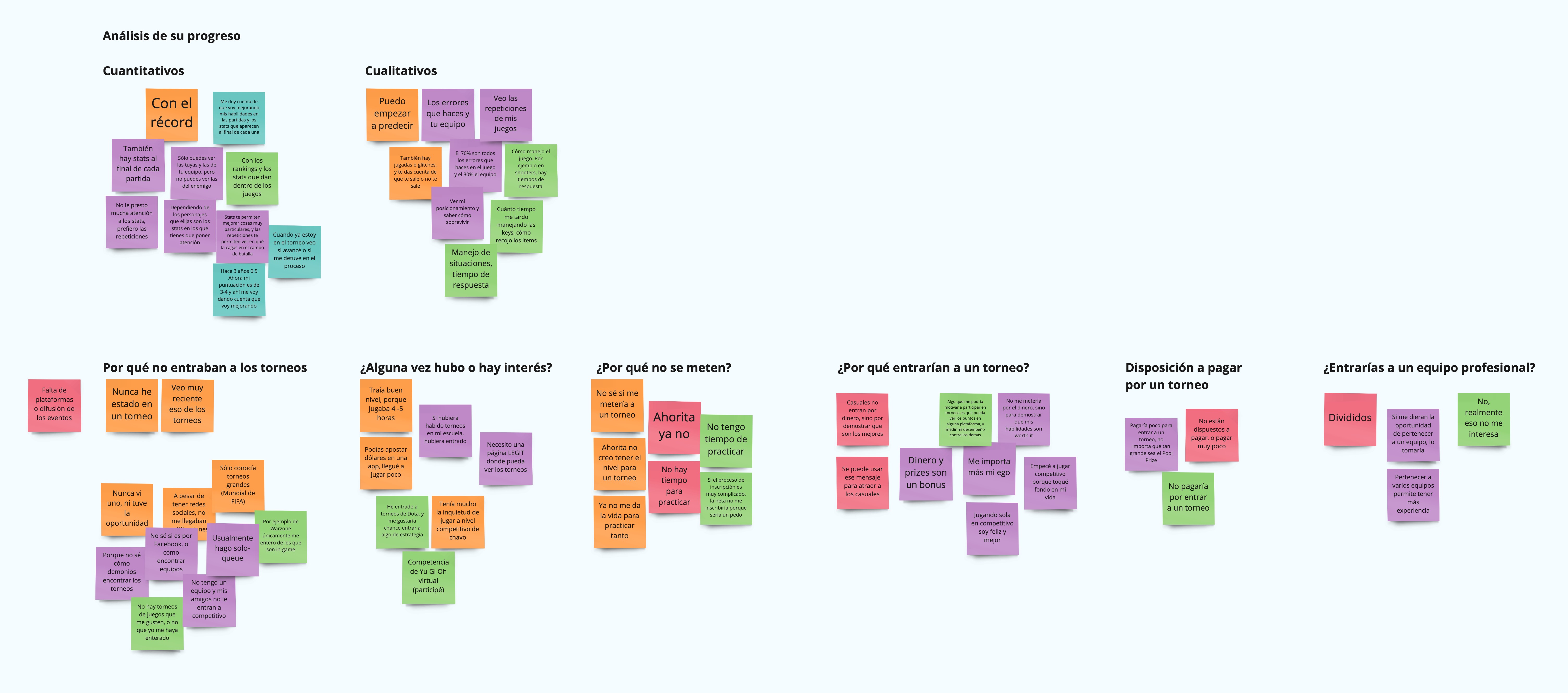
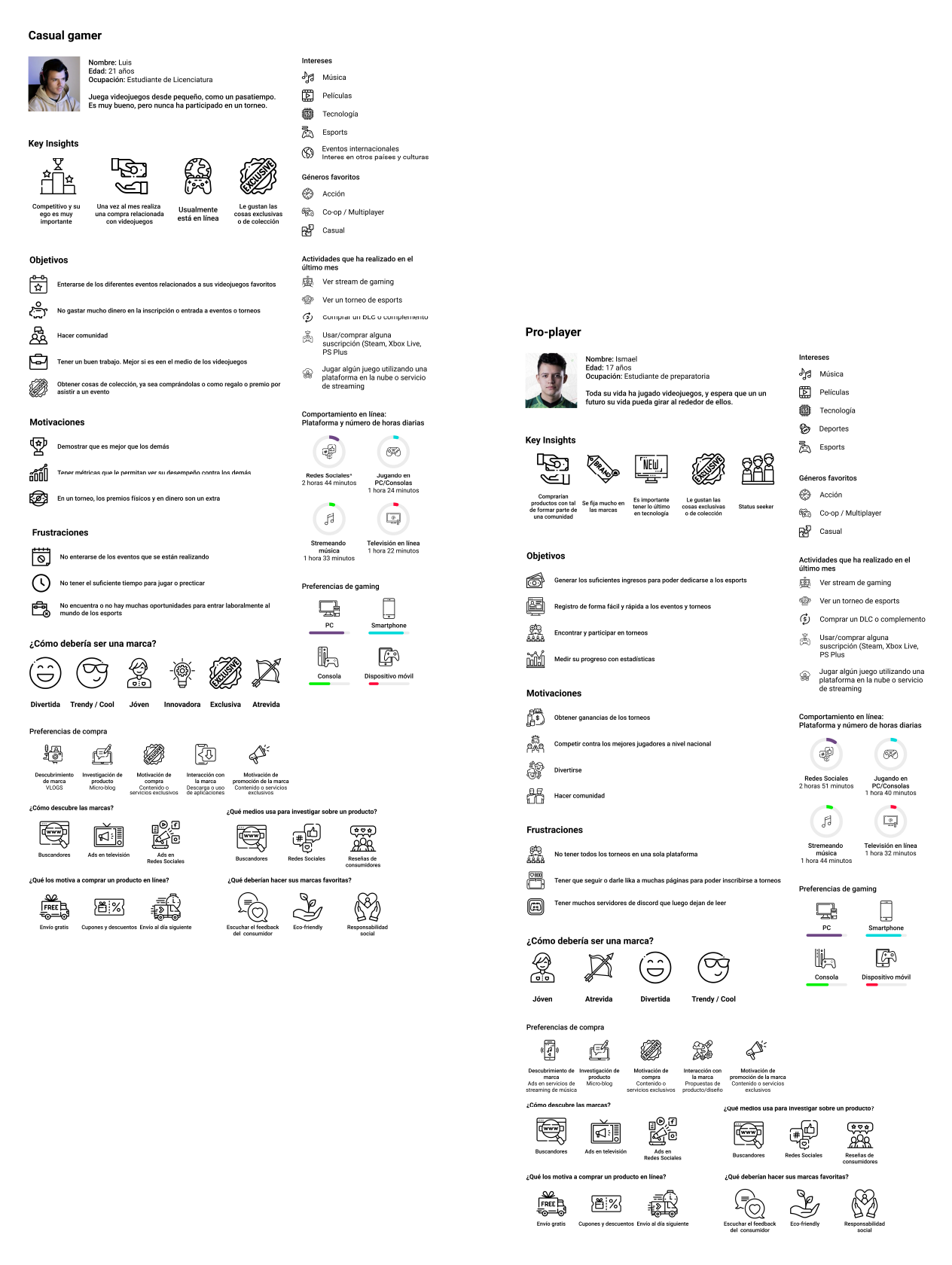
Conducting competition analysis
While waiting on the user needs survey results, I made a competition SWOT analysis, where
several platforms, that already offered the same or similar services that Esports State, were analysed.
This helped us find the areas of opportunity and improvement that Esports State could tackle
with their platform.
It was found that:
- Most platforms do not offer a career path for gamers in the industry
- In some tournament platforms, players need to manually input their results
- Most of the platforms were either focused on a single game genre or offered a very small catalogue of games
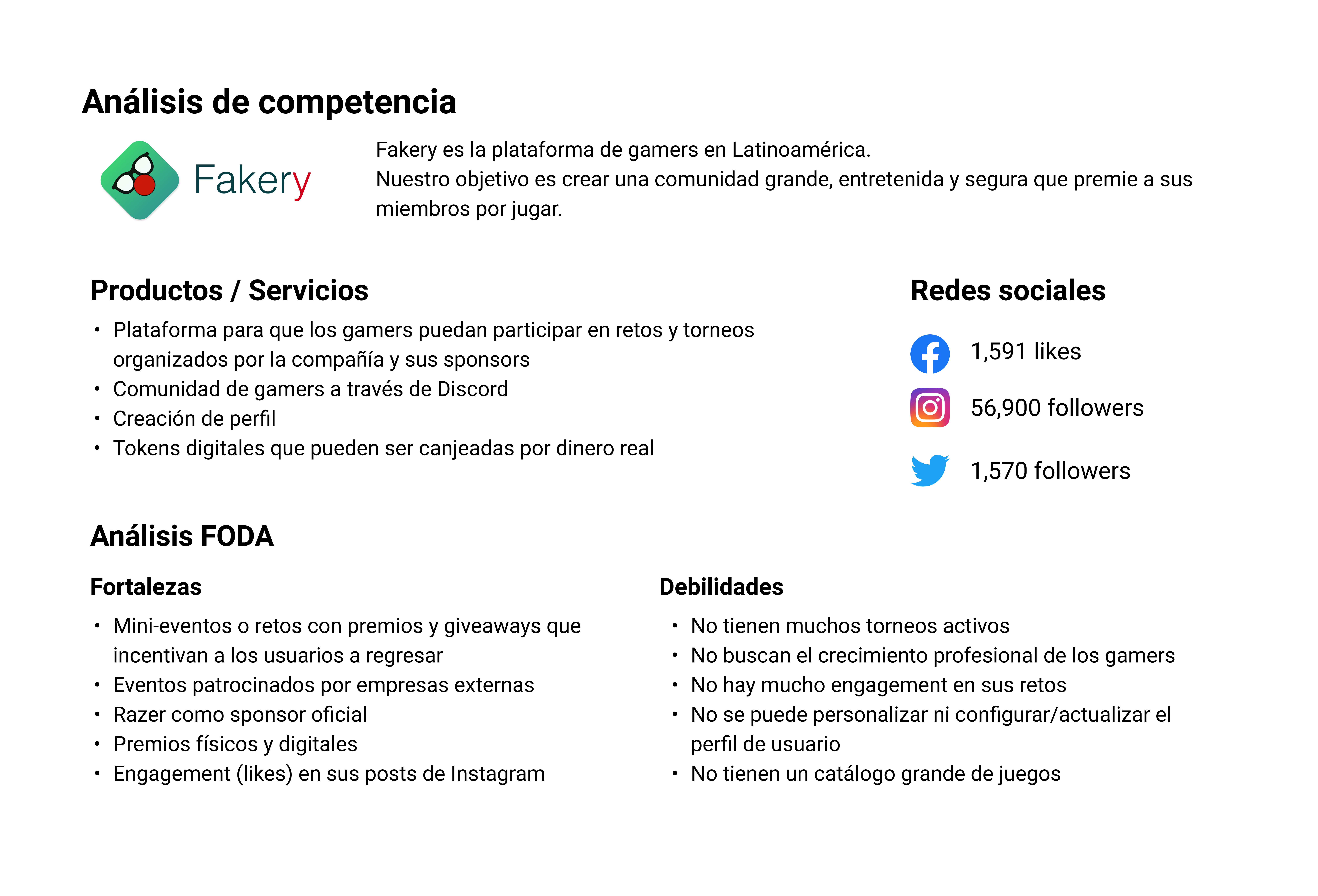
Ideating and prioritizing features
Once the user personas and competition analysis was complete, I conducted a brainstorming session with the team and stakeholders, where we came up with 16 possible features that could be implemented on the platform.
These ideas were validated using a value + usage matrix, with data collected from a survey, where those ideas landing in the top-right quadrant would be implemented first as they would be widely used by users, and would bring them the most value.
This prioritization also allowed the team to come up with a product roadmap for short, mid and long-term feature releases, based on the effort that each feature required, as well as the impact it would bring to users.

Prototyping the MVP
We identified the following key features for the MVP:
- Having a tournament platform, with free-to-enter tournaments and live updates
- Weekly or monthly tasks and achievements to level up
- Recruitment messages to be a part of Altar Esports (a professional esports team)
- Highlights for tournament champions
- Weekly or monthly events to generate online content on social media
The MVP was prototyped in Figma, applying UX best practices and deeply taking into consideration the motivations and traits of our users.
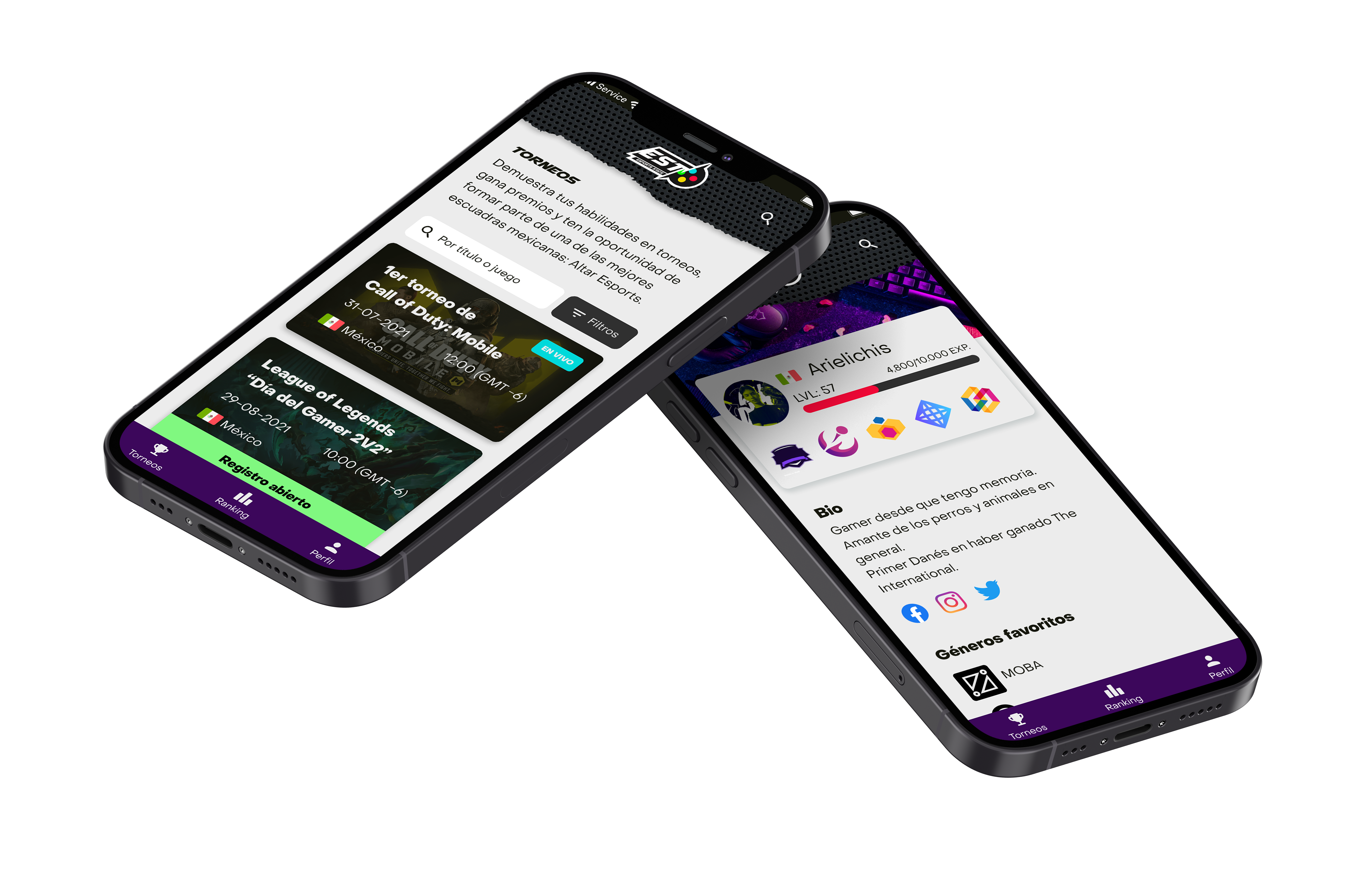
Key Takeaways
Research is the best tool to define a great product
By having actual data, like insights and stats, that would validate the needs, motivations and characteristics of our users, we were able to create a product that would actually fulfill them as gamers and pro-players, while fulfilling the business requirements of the company at the same time.
Background & overview
Esports State is an esports mexican startup that connects gamers and brands, by creating influencer
marketing and pro-player interactions, gaming-focused marketing campaigns, and tournaments and events.
I joined Esports State in the second semester of 2021 as a solo UX/UI designer for the company and
helped them with:
- Planning a business and design strategy by working close to stakeholders, investors and users.
- Executing UX research to collect qualitative and quantitative data to define user personas and their needs.
- Conducting ideation sessions within the team to define a variety of solutions, which were later prioritized based on a value and usage matrix.
My role
UX/UI Designer
User and competition research, prototyping.
The process
The process at Esports State was based on the Double Diamond process, where we aimed to incorporate the key phases of discovery, definition, ideation and implementation.
Collecting business requirements
The goal Esports State is aiming for is to promote eSports in Latin America. They seek to consolidate
a community of gamers in which there are spaces and tools that allow the development of talent
and professionalization of the passion for Esports; in other words, they want to help gamers
become pro-players.
In addition, they also seek to connect brands with players and create marketing
strategies for various products. To achieve this, it is necessary to develop a platform where
gamers can develop their talent, take part in events and connect with brands.

Defining our users and understanding their needs
Based on the business requirements, we needed to segment our population. We took by reference the “Gaming personas” article by Global Web Index, which categorizes the gaming community into 6 different users:
- Mobile-only
- Casual gamer
- Esporter or pro-player
- Socializer
- Cloud-gamer
- Influencer
Based on the collected insights from brief 30-minute calls with 2 persons from each category, we decided that our target users were going to be casual gamers and esporters or pro-players.
After further conducting user research, both qualitatively and quantitatively via interviews and surveys, it was revealed that:
Casual Gamers
- Wouldn't participate in events or tournaments of their favorite games, as they don’t know where to find them
- Don't have enough time to practice or play
- Can't find too many opportunities to professionaly get into the world of videogames, and more specifically, esports
What motivates them:
- They want to show they are better gamers than others (competitivity)
- Not spending too much money on tournament inscriptions
- Winning prices, but not necessarily cash
Esporters or Pro-Players
- Don't have all the tournaments in a single platform
- Having to like or follow several pages to be able to enroll in tournaments
- Having too many Discord servers, for communication on the tournaments, overwhelms them
What motivates them:
- Winning prizes in each tournament (mostly cash)
- Competing against the best players nation-wide or internationally
- Having fun
- Forming a gaming community


Conducting competition analysis
While waiting on the user needs survey results, I made a competition SWOT analysis, where
several platforms, that already offered the same or similar services that Esports State, were analysed.
This helped us find the areas of opportunity and improvement that Esports State could tackle
with their platform.
It was found that:
- Most platforms do not offer a career path for gamers in the industry
- In some tournament platforms, players need to manually input their results
- Most of the platforms were either focused on a single game genre or offered a very small catalogue of games

Prototyping the MVP
We identified the following key features for the MVP:
- Having a tournament platform, with free-to-enter tournaments and live updates
- Weekly or monthly tasks and achievements to level up
- Recruitment messages to be a part of Altar Esports (a professional esports team)
- Highlights for tournament champions
- Weekly or monthly events to generate online content on social media
The MVP was prototyped in Figma, applying UX best practices and deeply taking into consideration the motivations and traits of our users.

Key Takeaways
Research is the best tool to define a great product
By having actual data, like insights and stats, that would validate the needs, motivations and characteristics of our users, we were able to create a product that would actually fulfill them as gamers and pro-players, while fulfilling the business requirements of the company at the same time.